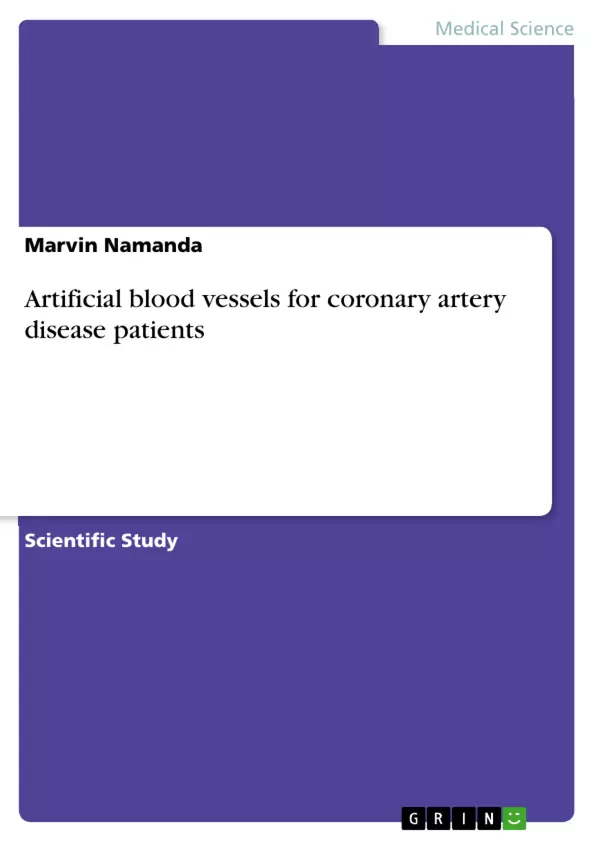The purpose of this paper is to give a detailed analysis of artificial blood vessels manufacturing using techniques such as additive manufacturing (3D printing). Scaffolding designs will be studied using computer aided software and choice of bio-compatible material that matches requirements for manufacturing the artificial blood vessels will be discussed too. Finally, the paper will look into the mechanical properties of the scaffoldings designs.
Inhaltsverzeichnis (Table of Contents)
- CHAPTER ONE
- 1.1 Overview
- CHAPTER TWO
- 2.1 Artificial Blood Vessel
- 2.2 Why do we Need them?
- 2.3 Additive Manufacturing
- 2.4 3D Printing
- 2.5 Fused Deposition Modeling
- CHAPTER THREE
- 3.1 Previous Researches
- 3.2 Artificial Vessels without the Use of the Scaffold
- 3.3 Current Status and Future Perspectives
- CHAPTER FOUR
- 4.1 Coronary Heart Disease
- 4.2 Treatment or Management of Cardiovascular Disease
- 4.3 Artificial Blood Vessels
- 4.4 Construction of an Artificial Vessel
- 4.5 Tissue Engineering of Blood Vessels
- 4.6 Biomaterial Scaffolds
- 4.7 Mechanical Properties
Zielsetzung und Themenschwerpunkte (Objectives and Key Themes)
This paper provides a comprehensive analysis of artificial blood vessel manufacturing using additive manufacturing (3D printing) techniques. It aims to explore the design of scaffolds using computer-aided software and discuss the selection of biocompatible materials suitable for the production of artificial blood vessels. The paper also delves into the mechanical properties of the scaffold designs.
- The challenges and limitations of traditional blood vessel replacement methods.
- The development and advantages of artificial blood vessels.
- The role of additive manufacturing (3D printing) in creating artificial blood vessels.
- The importance of biocompatible materials and scaffold design in creating functional artificial blood vessels.
- The mechanical properties of artificial blood vessels.
Zusammenfassung der Kapitel (Chapter Summaries)
Chapter One: Overview
This chapter introduces the problem of coronary artery disease and the need for alternative solutions to traditional bypass surgery. It highlights the limitations of using natural blood vessels and the challenges associated with prosthetic arteries, including thrombus formation and poor cell growth.
Chapter Two: Artificial Blood Vessel
This chapter explores the history of artificial blood vessel development, starting with early attempts using glass and aluminum. It discusses the advantages and limitations of using synthetic materials like Dacron and the characteristics of an ideal artificial blood vessel graft.
Chapter Three: Previous Researches
This chapter reviews existing research on artificial blood vessels, including studies exploring various approaches and materials. It examines the use of scaffolds and the current status and future perspectives of artificial blood vessel development.
Chapter Four: Coronary Heart Disease
This chapter focuses on coronary heart disease, its treatment, and the role of artificial blood vessels in addressing the issue. It delves into the construction of artificial vessels, tissue engineering techniques, and the importance of biomaterial scaffolds.
Schlüsselwörter (Keywords)
Artificial blood vessels, coronary heart disease, additive manufacturing, 3D printing, biocompatible materials, scaffold design, mechanical properties, tissue engineering, cardiovascular disease, treatment, management.
- Quote paper
- Marvin Namanda (Author), 2016, Artificial blood vessels for coronary artery disease patients, Munich, GRIN Verlag, https://www.grin.com/document/340642



